Home>Garden Essentials>How To Assess The Quality Of A Natural Play Area


Garden Essentials
How To Assess The Quality Of A Natural Play Area
Modified: October 20, 2024
Learn how to evaluate the excellence of a garden play space with our comprehensive guide. Discover the key factors to consider for creating a natural and engaging outdoor area for children.
(Many of the links in this article redirect to a specific reviewed product. Your purchase of these products through affiliate links helps to generate commission for Storables.com, at no extra cost. Learn more)
Introduction
Welcome to the wonderful world of natural play areas! These unique outdoor spaces are designed to promote imaginative play, exploration, and connection with nature. Natural play areas are becoming increasingly popular as they offer numerous benefits for children, including physical activity, cognitive development, and emotional well-being. However, not all natural play areas are created equal. It is crucial to assess the quality of these spaces to ensure they meet the highest standards of safety, accessibility, and overall design. In this article, we will explore the importance of assessing the quality of a natural play area and highlight key factors that should be considered.
Key Takeaways:
- Natural play areas should be safe, accessible, and engaging for children of all abilities and ages. Prioritizing factors like safety, inclusivity, and environmental impact ensures a fun and sustainable play environment.
- Assessing the quality of a natural play area involves considering safety, accessibility, age appropriateness, diversity of play opportunities, environmental impact, aesthetics, and maintenance. This ensures a well-rounded and enjoyable play experience for children.
Read more: How To Build Your Own Natural Play Area
Importance of Assessing the Quality of a Natural Play Area
When it comes to creating a natural play area, it is essential to prioritize the safety and well-being of the children who will be using it. Assessing the quality of a natural play area ensures that it meets certain standards and guidelines, providing a space where children can play freely and confidently. Here are a few reasons why assessing the quality of a natural play area is of utmost importance:
- Safety: Safety should always be the top priority when designing and evaluating a natural play area. By assessing its quality, potential hazards can be identified and mitigated. This includes checking for sharp edges, protruding nails, and any other potential risks that could cause harm to children.
- Accessibility: A high-quality natural play area should be accessible to all children, regardless of their abilities or disabilities. Assessing the area ensures that ramps, pathways, and structures are designed in a way that accommodates children with physical disabilities, allowing them to fully participate in play activities.
- Age Appropriateness: Different age groups have varying play needs and capabilities. Assessing the quality of a natural play area ensures that it provides age-appropriate play opportunities for children across a wide range of ages, from toddlers to older children.
- Diversity of Play Opportunities: Variety is key when it comes to play. A high-quality natural play area offers a wide range of play opportunities to cater to different interests and developmental needs. It should incorporate elements such as climbing structures, sand play, water play, sensory gardens, and nature trails, allowing children to engage in exploratory and imaginative play.
- Environmental Impact: A good natural play area should be designed with environmental sustainability in mind. Assessing the quality ensures that the area minimizes its impact on the surrounding ecosystem. This includes using eco-friendly materials, promoting biodiversity through native plantings, and incorporating sustainable drainage systems.
- Aesthetics: A well-designed natural play area is visually appealing and harmonious with its natural surroundings. Assessing the quality ensures that the play area blends seamlessly into the landscape, creating an inviting and enchanting environment that sparks children’s curiosity and creativity.
- Maintenance and Upkeep: Regular maintenance and upkeep are crucial for the longevity and safety of a natural play area. Assessing its quality allows for the implementation of a comprehensive maintenance plan that includes regular inspections, repairs, and cleaning to ensure that the play area remains in top condition.
By assessing the quality of a natural play area, we can optimize its design, functionality, and overall experience for children. It ensures that they have a safe, inclusive, and stimulating environment that promotes their physical, cognitive, social, and emotional development.
Factors to Consider
Assessing the quality of a natural play area involves examining various factors to ensure that it meets the highest standards. Here are some key factors to consider when evaluating a natural play area:
- Safety: Safety is paramount when it comes to children’s play areas. Look for potential hazards such as sharp edges, tripping hazards, or inadequate fall zones. Ensure that the play area is designed with appropriate safety measures, such as soft surfaces under climbing structures and proper fencing to prevent access to nearby hazards.
- Accessibility: A high-quality natural play area should be accessible to all children, including those with disabilities. Consider the presence of ramps, pathways, and inclusive play equipment that can accommodate children with mobility impairments. Look for features that promote sensory experiences, such as textured surfaces or auditory play elements.
- Age Appropriateness: Different age groups have different play needs and abilities. Assess whether the play area offers a variety of play opportunities targeting various age ranges. Look for age-appropriate equipment, challenges, and play features that engage and stimulate children at different developmental stages.
- Diversity of Play Opportunities: A high-quality natural play area should provide a wide range of play opportunities. Look for a mix of active and imaginative play elements such as climbing structures, swings, slides, sandboxes, musical instruments, water play, and natural elements like boulders or logs that encourage exploration and outdoor learning.
- Environmental Impact: Consider the impact of the play area on the environment. Look for sustainable design practices, such as the use of recycled or locally sourced materials, native plantings, and water-efficient irrigation systems. Assess whether the play area promotes environmental stewardship and connection with nature through features like rain gardens or butterfly habitats.
- Aesthetics: The visual appeal of a natural play area can greatly enhance the overall experience. Look for a design that blends harmoniously with the natural environment, utilizing organic shapes, colors, and textures. Consider the use of landscaping elements, such as trees, shrubs, and flowers, to create an inviting and immersive play environment.
- Maintenance and Upkeep: Regular maintenance is essential to keep a natural play area safe and functional. Assess the maintenance practices and protocols in place, including inspection schedules, cleaning routines, and repairs. Look for signs of ongoing maintenance and ensure that the play area is well-maintained and regularly monitored for any potential issues.
By considering these factors, you can assess the quality of a natural play area and ensure that it provides a safe, engaging, and inclusive play experience for children of all abilities and ages. Taking the time to carefully evaluate these aspects will contribute to the creation of exceptional natural play areas that promote healthy development and ignite a love for nature.
Safety
Safety is the foremost consideration when assessing the quality of a natural play area. Children’s well-being should always be the top priority, and thorough evaluation of safety measures is essential. Here are some key aspects to consider:
- Playground Equipment: Inspect the equipment for any potential hazards, such as sharp edges, pinch points, or entrapments. Ensure that the equipment is sturdy and well-maintained, with no loose or broken parts.
- Surfacing: Assess the safety of the play area surface. Look for appropriate surfacing under play structures, such as wood chips, rubber mats, or synthetic turf, which provide cushioning in case of falls.
- Fall Zones: Ensure that there is sufficient space between play equipment and other structures to prevent injuries from falls. Adequate fall zones give children enough room to land safely without colliding with other objects.
- Accessibility: Consider accessibility for children with disabilities. Ensure that the play area is designed to accommodate mobility aids, such as wheelchairs or walkers. Look for inclusive features like transfer platforms, ramps, or sensory elements that can be enjoyed by all children.
- Safety Signage: Check for clear and visible signage indicating age appropriateness and safety guidelines for equipment usage. Clear instructions help children understand how to play safely, minimizing the risk of accidents.
- Supervision: Assess whether the play area provides good visibility for supervisors to monitor children’s activities. Adequate seating areas or elevated platforms can offer better vantage points for caregivers to ensure the safety of children at all times.
- Barriers and Fencing: Check if the play area is properly enclosed with barriers or fencing to prevent unauthorized access. This helps ensure the safety and security of children within the designated play space.
Regular inspections and maintenance play a crucial role in ensuring ongoing safety in a natural play area. Taking proactive measures to identify and address safety concerns will help create a secure and enjoyable environment for children to play and explore.
Accessibility
Ensuring accessibility in a natural play area is vital to create an inclusive environment where children of all abilities can fully participate in play activities. Here are key factors to consider when assessing the accessibility of a natural play area:
- Ramps and Pathways: Evaluate if there are ramps or gently sloped pathways that provide access to different play areas. These features enable children with mobility impairments or those using mobility aids, such as wheelchairs or walkers, to navigate the play area with ease.
- Transfer Platforms: Assess if there are transfer platforms or transfer stations available to assist children with limited mobility to move from a wheelchair to a play structure or equipment. These features enhance inclusivity and enable children with disabilities to engage in a wider range of play experiences.
- Functional Accessibility: Consider the functionality of play equipment and elements. Ensure that there are accessible options available, such as inclusive swings, sensory play panels at varying heights, or musical instruments designed for wheelchair users.
- Sensory Considerations: Pay attention to sensory experiences within the play area. Look for features that cater to children with sensory sensitivities, such as calming areas, textured surfaces for tactile stimulation, or interactive elements that engage multiple senses.
- Signage and Wayfinding: Evaluate if the play area has clear signage and wayfinding markers that are easily readable and provide guidance for individuals with visual impairments. Braille or tactile signage can enhance accessibility for children with visual disabilities.
- Inclusive Design: Assess if the play area incorporates universal design principles that cater to a wide range of abilities. Consider elements like adjustable swing seats, accessible sand play or water play areas, and sensory gardens with various tactile experiences that can be enjoyed by children of different abilities.
- Collaboration with Accessibility Experts: If possible, involve accessibility experts or organizations specializing in inclusive play in the design and evaluation process. Their knowledge and expertise can provide valuable insights to ensure that the play area meets accessibility standards and creates an inclusive play experience for all children.
By prioritizing accessibility, we can create natural play areas that remove barriers and provide equal opportunities for all children to participate and enjoy outdoor play. Inclusivity fosters a sense of belonging and promotes social integration, allowing children to learn and grow together in a supportive and inclusive environment.
Read more: How To Organize A Play Area For Toddlers
Age Appropriateness
Considering age appropriateness is essential when assessing the quality of a natural play area. Play experiences should be engaging, challenging, and developmentally appropriate for children of different age groups. Here are key factors to consider:
- Evaluating Play Equipment: Examine the play equipment available and determine if it caters to different age groups. Look for equipment specifically designed for toddlers, preschoolers, and older children. Age-appropriate equipment ensures that children can engage in play experiences that match their abilities and developmental stages.
- Cognitive and Physical Challenges: Assess if the play area provides cognitive and physical challenges suitable for children of different ages. Equipment and play elements should offer varying degrees of complexity to support skill development and provide age-appropriate stimulation.
- Social Interaction and Cooperative Play: Consider if the play area encourages social interaction and cooperative play among children of different ages. Look for features that promote shared play experiences, such as group swings, climbing structures with multiple entry points, or interactive games that foster collaboration and communication.
- Scaled Play Experiences: Evaluate if the play area incorporates scaled play experiences that accommodate the different physical abilities and sizes of children at different ages. Features like graduated-height balance beams, slides, or climbing structures allow children of various ages to explore and engage at their own comfort level.
- Imagination and Creativity: Consider if the play area offers opportunities for imaginative and creative play that appeal to different age groups. Look for open-ended play elements, such as sandboxes, loose parts, or natural materials, that stimulate children’s imagination and encourage independent and cooperative play scenarios.
- Growth Potential: Assess if the play area provides challenges and play opportunities that allow children to develop their physical, cognitive, and social skills as they grow. A high-quality natural play area should offer a progression of play experiences that allow children to build on their existing abilities and continuously expand their skills through age-appropriate challenges.
- Feedback from Age-Appropriate Users: Consider gathering feedback from children of different age groups or consulting child development experts to ensure that the play area caters to their needs and interests. Their input can provide valuable insights into the effectiveness of the play area in meeting age-appropriate play requirements.
By considering age appropriateness, we can create natural play areas that offer stimulating and engaging experiences for children at different stages of development. This approach ensures that all children have the opportunity to learn, grow, and have fun in a play environment tailored to their specific needs and abilities.
Look for a variety of natural elements like trees, rocks, and water. Check for safe and sturdy equipment, and assess the overall cleanliness and maintenance of the area.
Diversity of Play Opportunities
Creating a diverse range of play opportunities is crucial when assessing the quality of a natural play area. Children thrive when provided with a variety of play experiences that engage their imaginations, foster creativity, and support their overall development. Here are key factors to consider:
- Active Play: Evaluate if the play area offers opportunities for physical activity and gross motor development. Look for features such as climbing structures, swings, balance beams, or running paths that encourage children to engage in active play and build strength, coordination, and endurance.
- Imaginative Play: Assess if the play area incorporates elements that spark imaginative play. Look for areas that inspire children to create stories, role play, or build imaginary worlds. Features like playhouses, forts, or natural materials that can be manipulated allow children to engage in imaginative play scenarios and develop their creative thinking skills.
- Sensory Play: Consider if the play area provides opportunities for sensory exploration and stimulation. Look for features such as sand or water play areas, sensory gardens with textured plants, or musical elements that engage children’s senses of touch, sight, sound, and smell. Sensory play enhances cognitive development and provides a holistic play experience.
- Creative Expression: Assess if the play area encourages children to express themselves creatively through art, music, or other forms of self-expression. Look for features like outdoor art stations, musical instruments, or open spaces that allow children to engage in activities that foster their artistic or musical talents.
- Nature Exploration: Consider if the play area provides opportunities for children to engage with the natural environment. Look for nature trails, wildlife observation areas, or plantings that encourage children to explore and learn about nature. Connecting with the natural world promotes environmental stewardship and instills a love for the outdoors.
- Problem Solving and Cognitive Challenges: Assess if the play area offers play opportunities that require problem-solving and critical thinking skills. Look for elements like puzzles, mazes, or interactive games that stimulate cognitive development and encourage children to strategize, plan, and overcome challenges.
- Inclusive Play: Ensure that the play area includes features and activities that can be enjoyed by children of all abilities. Design elements such as sensory play panels, inclusive swings, or quiet areas provide opportunities for children with disabilities to actively participate and engage in play alongside their peers.
- Multi-Age Play: Consider if the play area facilitates multi-age play experiences. Look for features that allow children of different ages to interact and play together, fostering social interactions, cooperation, and mentorship between older and younger children.
By providing a diverse range of play opportunities, natural play areas become dynamic and engaging spaces that meet the unique needs and interests of all children. This encourages them to explore, learn, and develop essential skills in a fun and enriching environment.
Environmental Impact
Assessing the environmental impact of a natural play area is crucial to ensure sustainability and promote a harmonious relationship between the play area and its surroundings. Here are key factors to consider when evaluating the environmental impact of a natural play area:
- Use of Sustainable Materials: Evaluate if the play area incorporates sustainable materials in its construction. Look for eco-friendly alternatives to traditional materials, such as recycled plastics, sustainably sourced wood, or natural and biodegradable materials. Using sustainable materials reduces the environmental footprint of the play area.
- Native Plantings: Consider if the play area integrates native plantings into its design. Native plants are well-adapted to the local climate and require less water and maintenance compared to exotic species. They also support local biodiversity by attracting native insects, birds, and other wildlife.
- Water Conservation: Assess if the play area implements water conservation measures. Look for features like rainwater harvesting systems, permeable surfaces, or water-efficient irrigation systems. These measures minimize water waste and contribute to the overall sustainability of the play area.
- Stormwater Management: Consider if the play area incorporates sustainable stormwater management practices. Look for features like rain gardens, bioswales, or permeable pavements that allow stormwater to be naturally filtered and absorbed into the ground, reducing the load on municipal drainage systems.
- Energy Efficiency: Evaluate if the play area incorporates energy-efficient features. Look for designs that maximize natural lighting and ventilation, reducing the need for artificial lighting and climate control systems. Energy-efficient features contribute to the overall sustainability and eco-friendliness of the play area.
- Minimizing Waste: Assess if the play area promotes waste reduction and recycling. Look for designated recycling bins and composting facilities. Additionally, consider if the play area incorporates features made from recycled materials or repurposed items, reducing the demand for new resources.
- Environmental Education: Consider if the play area incorporates elements that educate children about the environment. Look for interpretive signage, educational displays, or interactive features that teach children about sustainable practices, local ecosystems, and the importance of environmental stewardship.
- Long-Term Sustainability: Evaluate if the play area is designed with long-term sustainability in mind. Consider if the play area can adapt to changing environmental conditions or if measures are in place to regularly assess and address any potential ecological impacts.
By considering the environmental impact of a natural play area, we can create spaces that promote sustainability and teach children the importance of caring for the environment. By integrating sustainable practices, we can minimize our ecological footprint and create play areas that inspire a love for nature and a sense of environmental responsibility.
Aesthetics
The aesthetics of a natural play area play a significant role in creating an inviting and engaging environment for children. A visually appealing play area enhances the overall play experience and encourages children to connect with nature. Here are key factors to consider when assessing the aesthetics of a natural play area:
- Integration with Natural Surroundings: Assess if the play area blends harmoniously with its natural surroundings. Look for design elements that complement the existing landscape, such as incorporating natural materials like rocks, logs, and plants into the play area. A seamless integration with the environment creates a visually pleasing and immersive play environment.
- Use of Colors and Textures: Consider if the play area incorporates a variety of colors and textures to stimulate children’s senses and create visual interest. Look for vibrant and earthy tones that evoke a sense of joy and connection with nature. Textured surfaces can provide tactile stimulation and add depth to the overall aesthetics of the play area.
- Artistic Elements: Assess if the play area incorporates artistic elements that enhance its visual appeal. Look for sculptures, murals, or mosaics that add artistic flair and spark children’s imagination. Artistic elements can create focal points within the play area and add a touch of creativity to the overall design.
- Landscaping: Evaluate the use of landscaping to enhance the aesthetics of the play area. Consider the presence of trees, shrubs, flowers, and other plantings that create a visually pleasing environment and offer shade and natural beauty. Well-maintained landscaping contributes to the overall ambiance and aesthetics of the play area.
- Visual Flow and Layout: Consider if the play area is designed to provide a clear visual flow and easy navigation. Look for pathways, open spaces, and strategically placed play elements that allow children to explore the play area intuitively. A well-designed layout ensures that children can engage with the various play opportunities seamlessly.
- Lighting: Evaluate if the play area has appropriate lighting for safety and aesthetics. Consider the use of solar-powered lighting to create a soft and inviting atmosphere. Well-placed lighting can highlight certain features or create a magical ambiance during evening play sessions.
- Aesthetic Appeal to Different Age Groups: Consider if the play area’s aesthetics appeal to children of different age groups. Look for design elements that are visually engaging and appropriate for varying developmental stages. A play area that is visually stimulating and age-appropriate enhances children’s overall play experience.
- Maintenance of Aesthetics: Assess if the play area is designed and maintained in a way that ensures enduring aesthetics. Consider the use of durable materials and regular upkeep to prevent the deterioration of the play area’s visual appeal over time. Proper maintenance ensures that the play area continues to be visually attractive and appealing for children to enjoy.
By paying attention to the aesthetics of a natural play area, we can create visually stunning and captivating spaces that inspire children’s exploration, spark their imagination, and foster a deep connection with nature.
Read more: How To Make A Play Area For Baby
Maintenance and Upkeep
Maintenance and upkeep are essential aspects to consider when assessing the quality of a natural play area. A well-maintained play area provides a safe, clean, and enjoyable environment for children to play and explore. Here are key factors to consider regarding maintenance and upkeep:
- Regular Inspections: Regularly inspect the play area for any signs of damage, wear and tear, or potential safety hazards. Conduct thorough inspections of play equipment, surfacing, fencing, and other structures to identify any maintenance or repair needs.
- Repairs and Replacements: Address maintenance issues promptly by making necessary repairs or replacements. Fix any broken equipment, loose parts, or damaged surfacing as soon as possible to ensure the safety and longevity of the play area.
- Cleaning and Sanitation: Implement a regular cleaning and sanitation routine to keep the play area hygienic and free from debris. Clear the play area of litter, fallen leaves, and other hazards. Clean surfaces, equipment, and play elements regularly to maintain cleanliness.
- Vegetation Control: Manage vegetation within and around the play area. Regularly trim trees, shrubs, and other plants to maintain clear sightlines and prevent potential hazards like overhanging branches. Remove any poisonous or thorny plants to ensure the safety of children.
- Surfacing Maintenance: Inspect and maintain the play area surfacing regularly. Ensure that resilient surfacing materials, such as wood chips or rubber mulch, are adequately replenished to provide effective cushioning and reduce the risk of injuries from falls.
- Seasonal Considerations: Take seasonal factors into account when planning maintenance. Perform special inspections and maintenance tasks in preparation for winter, such as checking for ice buildup or applying winterized coatings to equipment. Spring maintenance may involve clearing debris, inspecting drainage systems, and refreshing landscaping.
- Engage Maintenance Personnel: Consider hiring or training maintenance personnel dedicated to the upkeep of the play area. They can regularly inspect, clean, and perform necessary repairs to ensure the play area’s continued safety and attractiveness.
- User Feedback: Encourage users and caregivers to provide feedback on the play area’s condition and any maintenance concerns. Actively seek input from the community to identify potential issues or areas for improvement.
- Maintenance Plan and Schedule: Create a comprehensive maintenance plan that includes regular inspections, cleaning schedules, and repair or replacement timelines. This plan ensures that maintenance tasks are carried out consistently and that the play area remains in excellent condition over time.
By prioritizing maintenance and upkeep, a natural play area can maintain its safety, functionality, and visual appeal. Regular inspections, prompt repairs, and proper cleaning routines contribute to the longevity and quality of the play area, providing children with a safe and enjoyable space to learn and grow.
Conclusion
Assessing the quality of a natural play area is essential to create a safe, inclusive, and engaging environment for children to play and explore. By considering factors such as safety, accessibility, age appropriateness, diversity of play opportunities, environmental impact, aesthetics, and maintenance and upkeep, we can create exceptional natural play areas that foster children’s physical, cognitive, social, and emotional well-being.
Ensuring the safety of a natural play area involves a thorough evaluation of play equipment, surfacing, accessibility features, and supervision. By prioritizing safety measures, we can minimize potential hazards and provide children with a secure play environment.
Accessibility is a vital aspect to consider, as it promotes inclusivity and allows children of all abilities to fully participate in play activities. The incorporation of ramps, pathways, transfer platforms, and sensory elements ensures that the play area is accessible to all children, creating an inclusive play environment.
Age appropriateness is crucial in providing play experiences that meet the developmental needs and interests of children at different stages. By offering a variety of play opportunities and challenges, children can engage in activities that align with their capabilities and support their growth and development.
A diverse range of play opportunities enhances children’s overall play experiences and encourages them to explore, imagine, create, and connect with nature. By incorporating active play, imaginative play, sensory play, and nature exploration, natural play areas offer a holistic play experience that promotes well-rounded development.
The environmental impact of a natural play area should be considered to ensure sustainability and minimize its ecological footprint. By using sustainable materials, incorporating native plantings, implementing water conservation measures, and promoting environmental education, we can create play areas that foster a love for nature and instill a sense of environmental responsibility in children.
The aesthetics of a natural play area contribute to its appeal and create an inviting and immersive environment. By integrating with the natural surroundings, using colors and textures, incorporating artistic elements, and maintaining visual flow and layout, we create visually stunning play areas that spark children’s curiosity and engagement.
Maintenance and upkeep are crucial for preserving the safety, functionality, and overall quality of a natural play area. Regular inspections, repairs, cleaning routines, and vegetation control ensure that the play area remains in excellent condition and provides a positive play experience for children over time.
In conclusion, assessing the quality of a natural play area is a multi-faceted process that takes into account various factors to create an exceptional play environment. By prioritizing safety, accessibility, age appropriateness, diversity of play opportunities, environmental impact, aesthetics, and maintenance and upkeep, we can create natural play areas that inspire children’s imagination, promote their well-being, and foster a lifelong love for outdoor play and connection with nature.
Frequently Asked Questions about How To Assess The Quality Of A Natural Play Area
Was this page helpful?
At Storables.com, we guarantee accurate and reliable information. Our content, validated by Expert Board Contributors, is crafted following stringent Editorial Policies. We're committed to providing you with well-researched, expert-backed insights for all your informational needs.




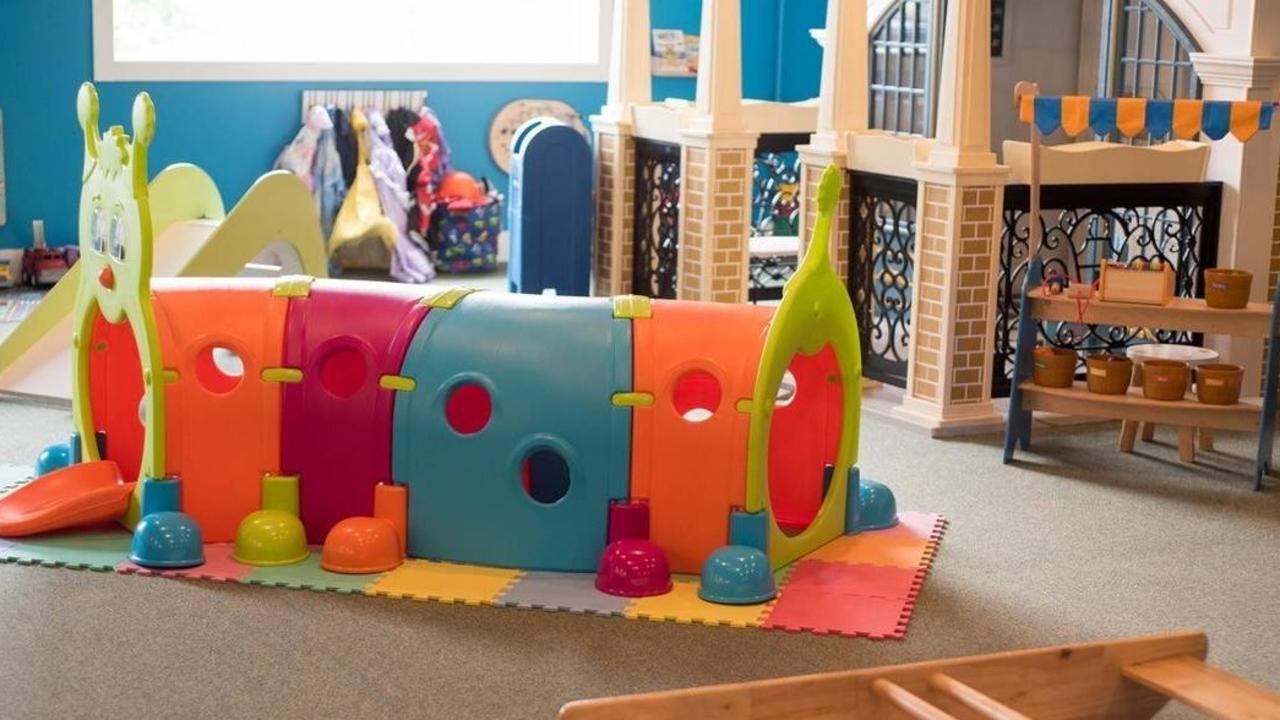
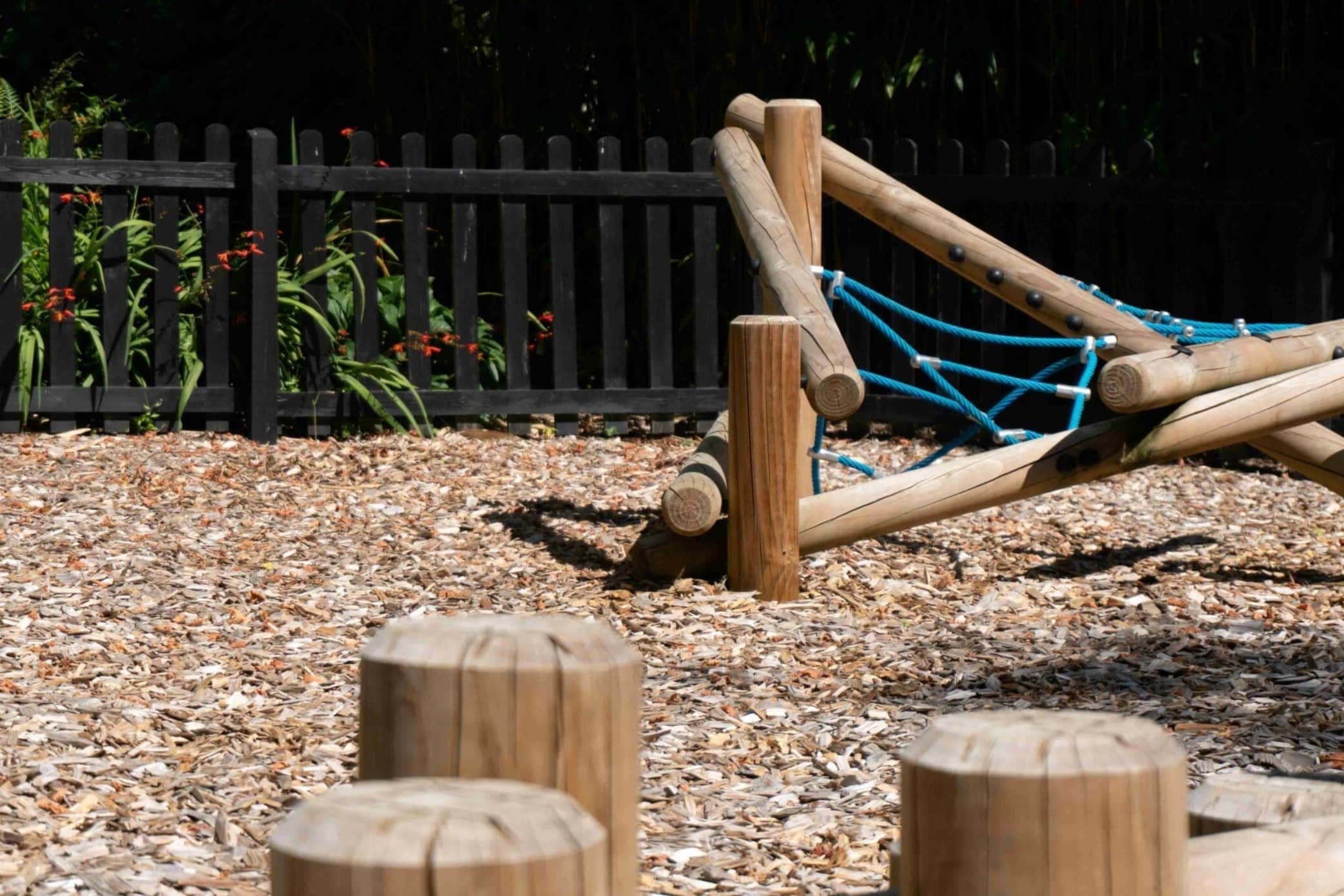


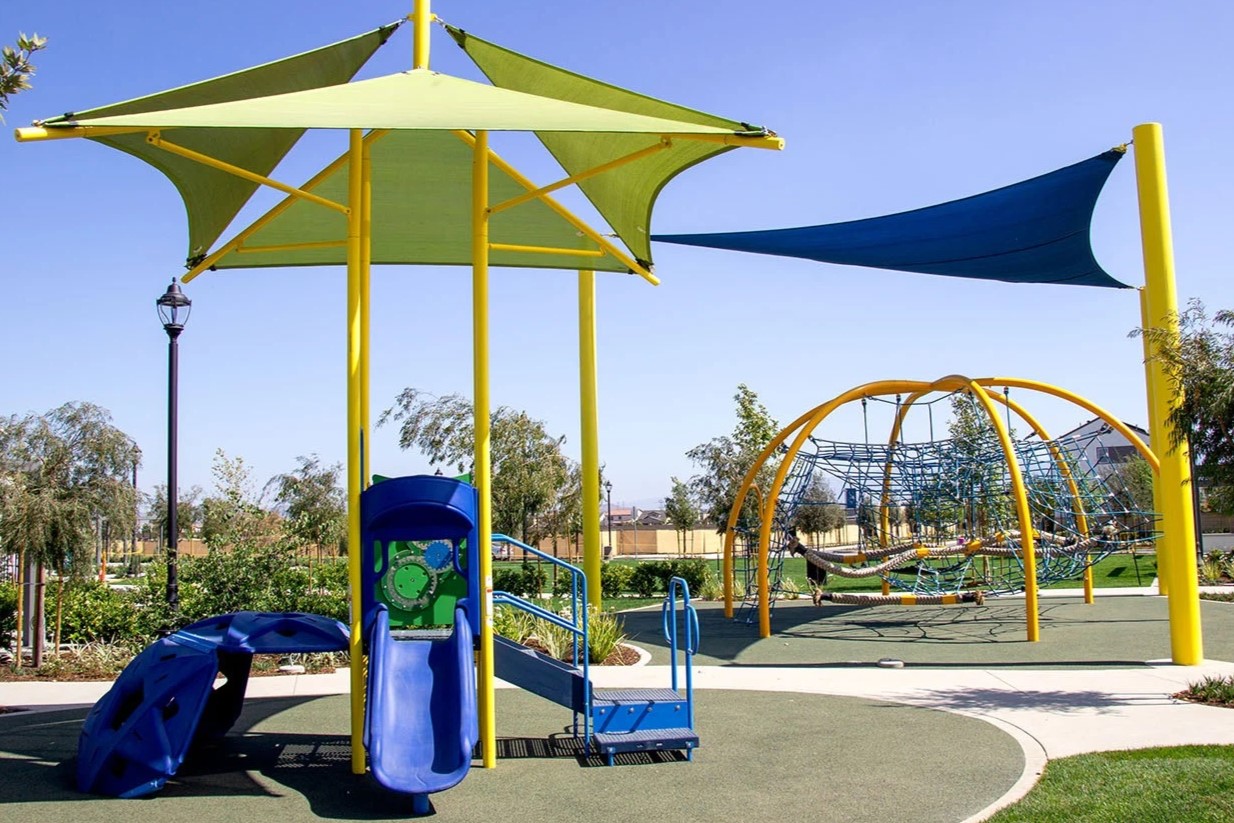


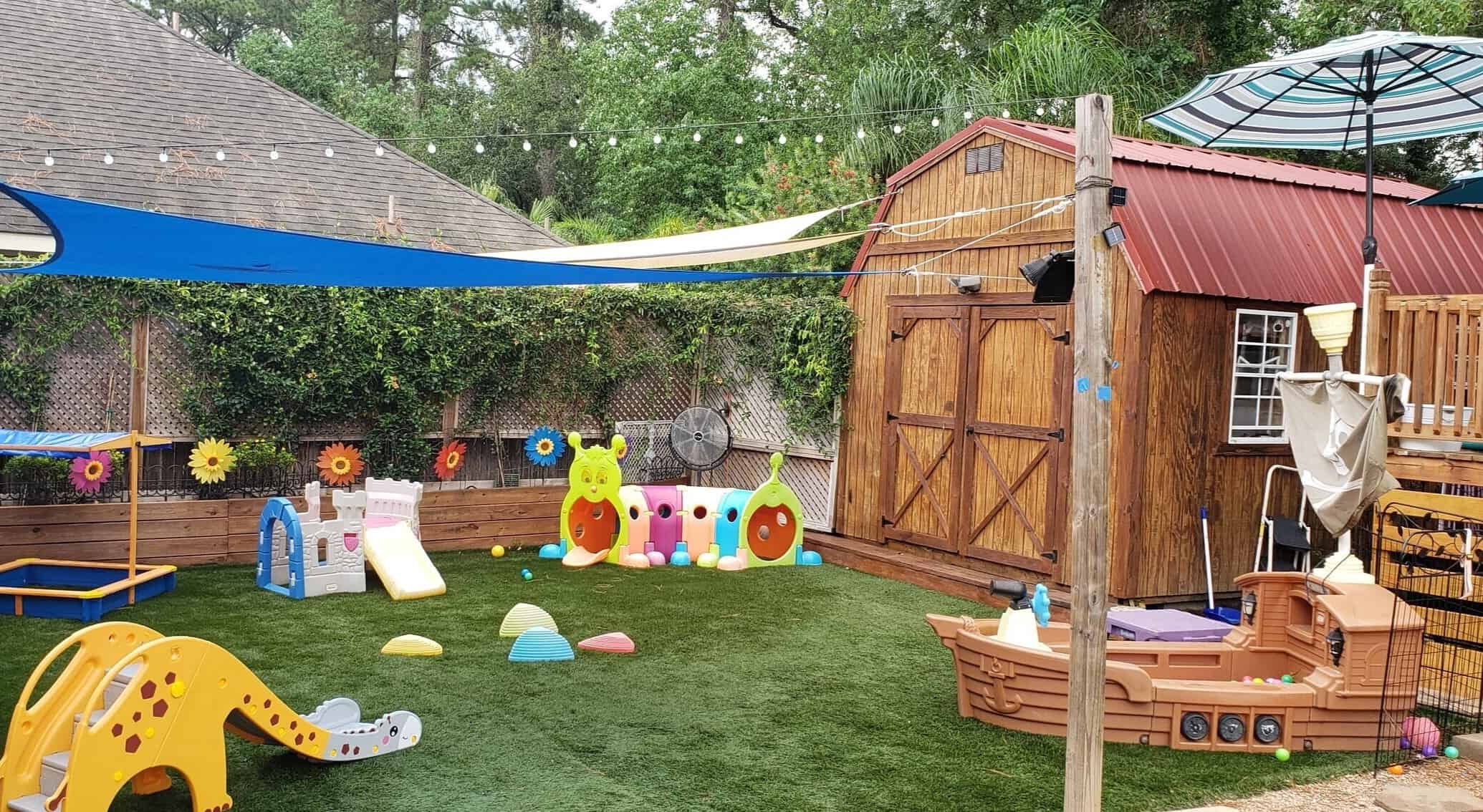
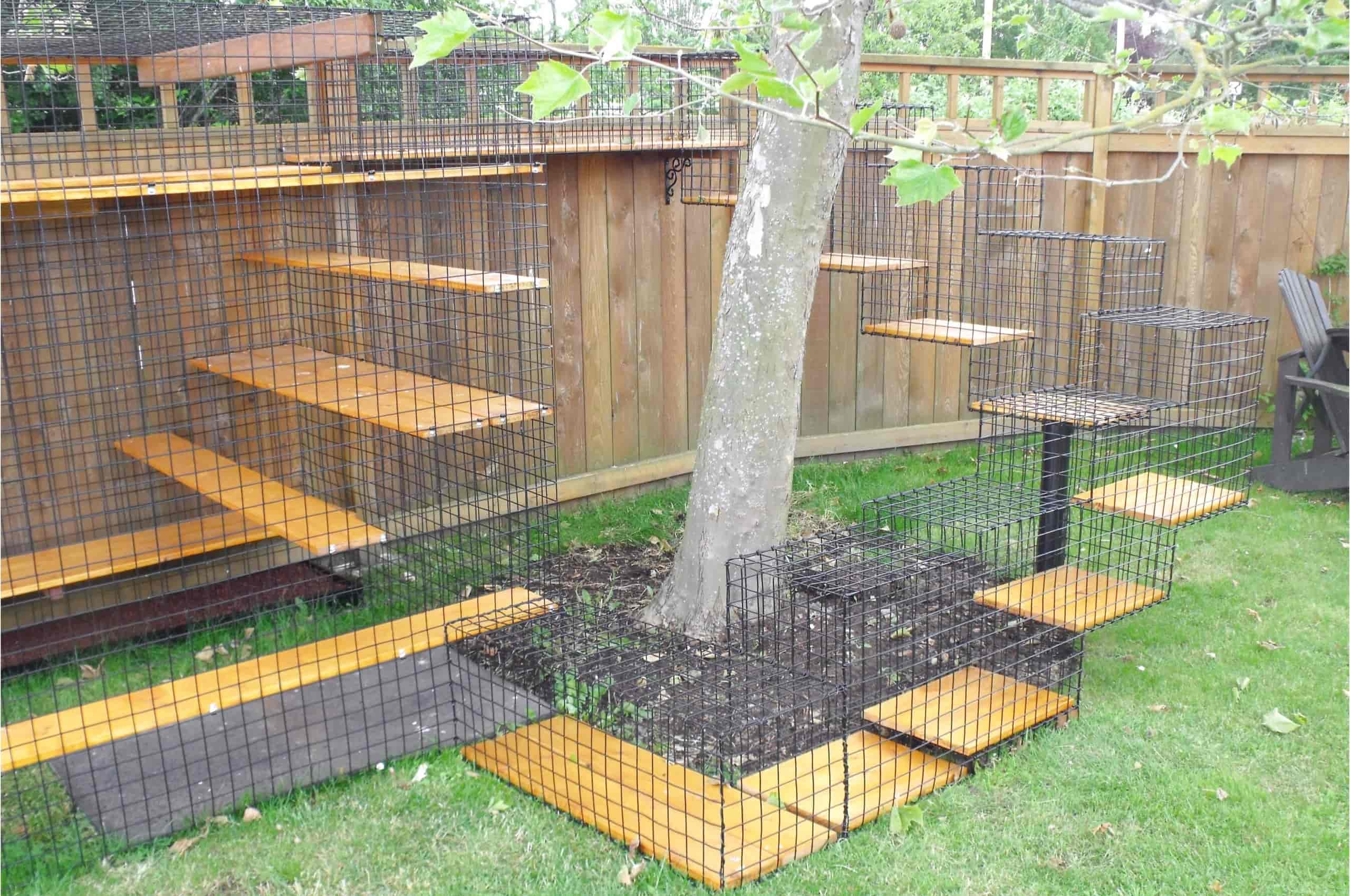

0 thoughts on “How To Assess The Quality Of A Natural Play Area”